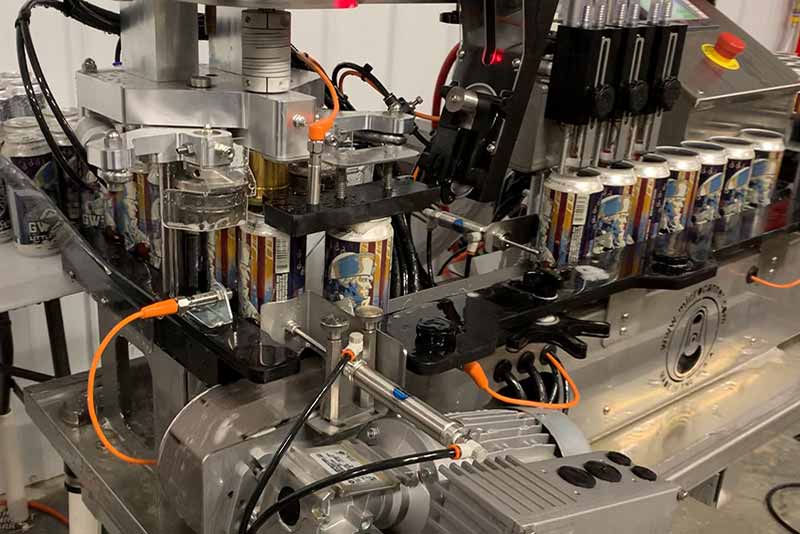
Cans are in high demand across all industries. There is no questioning that. Just check out this Fortune Business Insights report that shows consistent year-over-year growth of aluminum cans in the market through 2027, with beer leading that growth.
All the projections—such as from Mordor Intelligence, predicting a compound annual growth rate of 3.5 percent through 2028; Datam Intelligence, projecting a 3.44 CAGR through 2030; or Future Market Insights, foreseeing a 4.7 percent CAGR through 2033—expect the market to continue to grow.
With the data revealing the beverage can market trending upward for the foreseeable future, it makes sense that breweries—if they haven’t jumped on this opportunity already—seriously look into procuring a canning line.
With so many options, which one do you get for your brewery? You have to consider a lot of factors. To make your decision easier, we got insights from manufacturers at Microcanner and Ska Fabricating as well as from Living the Dream Brewing. They explain the first steps, essential considerations, and costs to consider before purchasing a quality canning line.
(Above photography courtesy of Microcanner)
What We’ll Cover in This Piece:
Affordable, Industry-Leading Brewery Software
What Makes for a Quality Canning Line?
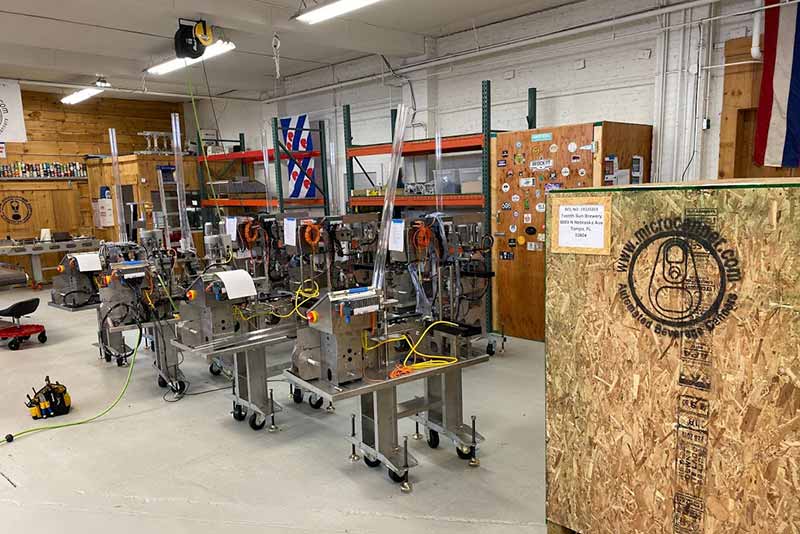
Photography courtesy of Microcanner
The good news first: There are a lot of quality canning lines out there. Microcanner Owner Todd Vriesenga points to Wild Goose and Cask as two of the premier filling options on the market. So when he launched his company in 2016—backed with decades of experience in the automotive assembly line industry—he looked towards those competitors to create the best option.
“We took the best of both worlds from Wild Goose and Cask,” he says. “To make a machine great at both filling and seaming.”
Vriesenga says there is a lot of focus on counter-pressure filling versus atmospheric filling with canning lines. His general rule of thumb?
“We try to keep it as simple as possible,” Vriesenga says, highlighting his team’s years of experience in manufacturing to “design a machine with as few moving parts as possible.”
Vriesenga says limited parts means less risk of the machine breaking down and a better chance of avoiding contamination.
Living the Dream Owner Jason Bell points to one thing that makes for a quality canning line above all else.
“They are all going to promise the world,” he says. “The most important thing is, is it going to work, and how long is it working?”
Ska Fabricating Marketing and Events Manager Elise Wright says it’s all about making the brewery team’s life easier.
“The design is to get the product from the filler onto the shelf with ease, speed, and cleanliness,” she says. “It offers a method to get product onto the shelf that benefits the process, people involved, and helps to streamline the process so everyone involved benefits from its existence.”
First Steps Breweries Should Take Before Buying a Canning Line

Photography courtesy of Microcanner
Once you have all your ducks in a row, namely assessing your big-picture dreams versus the physical reality of the situation, Wright says your first steps start with the wallet.
“A big piece of it is getting a budget in place for now and long-term planning as you grow and expand,” she says. “Automation is there to help achieve that growth and realize long-term plans.”
Wright says that beyond that, you would need to get on the phone and request a quote to get the process underway.
Vriesenga doesn’t want you to take the plunge without background knowledge about the canning process.
“The biggest thing is, I recommend trying mobile canning and get a feel for it,” he says. “[Mobile canning line companies] will teach you what you need [to properly can beer]: right temperature, right carbonation, and right head pressure to push beer into canner.”
From the brewery’s perspective, “Plan and prepare the best you can,” Bell says, who switched from mobile canning to a permanent Alpha Brewing Operations line in 2020. “[Canning lines] take a significant amount of utility. Make sure you have the electrical, the air compressor, the flow rate, the CO2 in capacity for purging, and the physical space.”
He adds, “Think about logistics to get the beer from the brite to the canning line—how long the run is and if you have the hose to do it.”
The decision for Living the Dream to go with Alpha Brewing Operations in 2020 was a four-year process that started in 2016, Bell notes.
“A number of factors caused us to put off the purchase from 2016 until 2020,” Bell says. “Alpha stayed patient and worked with us through that entire period.”
At the time, there were four companies that Bell and Living the Dream could choose to go with: Wild Goose, Cask, Alpha Brewing Operations, and American Beer (ABE).
“We developed a great relationship with [Alpha’s] team, and the support they offered put them over the top,” Bell says. “Also, they had some features we really liked which were not available in other lines.”
With that in mind, Bell recommends locating breweries in your area that you know and talking with them to learn what they like and dislike about their particular canning line.
“The more you prepare, the better your experience will be,” Bell says. “It’s critical.”
Top Considerations for Breweries Looking to Buy a Canning Line
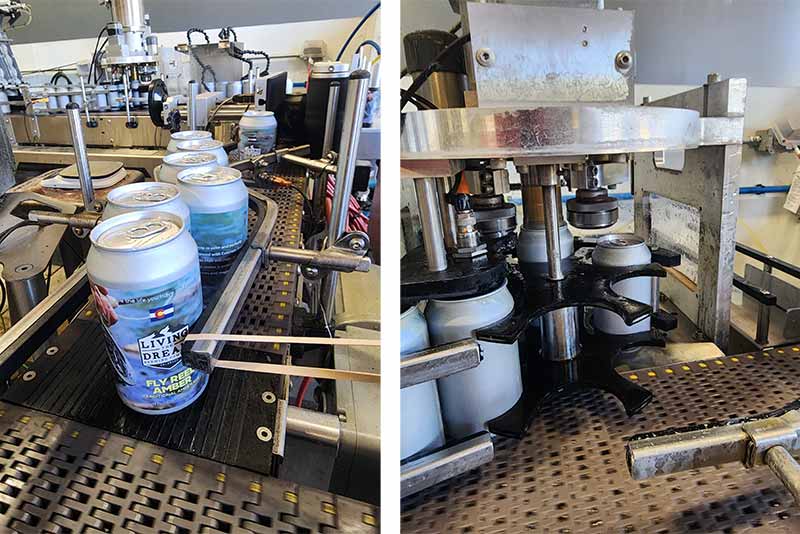
Photography courtesy of Living the Dream Brewing Company
Leaning into the preparation, Bell says you can never do too little.
“Scour the heck out of Pro Brewer for people’s comments,” he says. “Granted, take it with a grain of salt, but you’ll be able to see trends about the company.”
Another recommendation worth considering is where in the world you’re buying from and what kind of support you’re receiving.
“Pick a manufacturer that’s going to be around,” he says. “I would recommend against the direct China route—good luck getting help with that.”
Vriesenga agrees.“Make sure it’s made in the U.S., and make sure there is immediate access to support and parts,” he says. “Make sure it’s privately owned so you know you can reach someone. And make sure they have ethics.”
Wright stresses breweries dial in on their big-picture outlook.
“It’s not just about today, but thinking years and years down the line,” she says. “What is the footprint? What space do you have to work with? Are you thinking of expanding down the line? These all will dictate what can be part of that bigger vision.”
Important Specs to Know When Buying a Canning Line
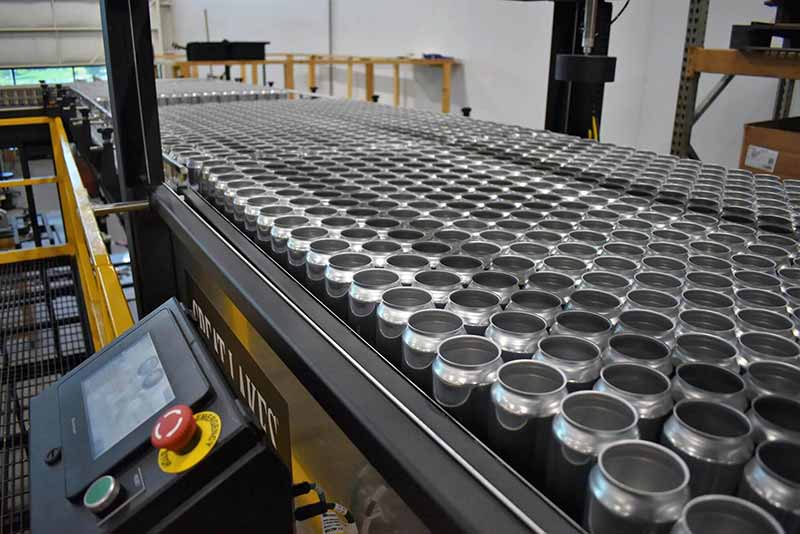
Photography courtesy of Ska Fabricating
For the product itself, Wright says these are some important specs to keep in mind: the cans per minute rate you intend to work with, how many people will work on the line, and where the end product is going.
“So much is dictated by speeds,” Wright says. “How fast are you looking to run? Do you want something fully or partially automatic? This all will dictate what machine you go with.”
Wright notes that your facility also plays a factor in the footprint. Basically, make sure your building supports the size of the canning line and any ancillary parts you include with it.
Most important for Vriesenga is to ensure the machine’s tooling—the components that run the operation—is the best it can be.
“Why reinvent the wheel and make proprietary tools?” he says, adding that the best tools “are expensive, but they are worth it.”
Bell cites several hot-button specs to be aware of when looking into a canning line.
“Does it fit?” he says. “Also, think of the dimensions and layout and whether you can get cans to the canning line.”
Bell adds that walking the path of the beer is important, from the tank to the can.
“You want as minimal intervention as possible,” he says. “Ask yourself how long is the fill-to-seam time. One point five seconds is fantastic; ten seconds is not great.”
Beyond that initial setup and spec, he says to always think of the doom and gloom scenario.
“Look at it from the eye of adjustments,” he says. “What can go wrong? If it fails, can I replace it? All those things matter.”
What Is a Canning Line Going to Cost Your Brewery?
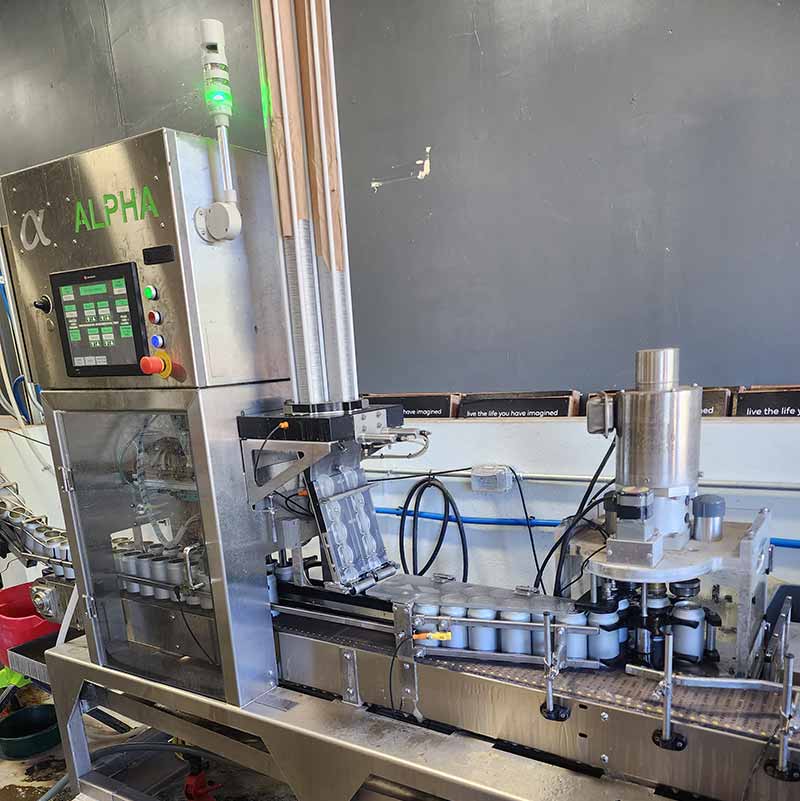
Photography courtesy of Living Dream Brewing Company
Everything matters, but sometimes, your purchase all boils down to pricing. What can you expect to pay for a canning line?
“Take your budget and double or triple it,” Bell says. “You gotta reverse engineer it, knowing your immediate and down-the-line plans.”
Bell says to think about whether you will just get the canning line itself or if you’ll add components such as a depalletizer or label applicator, among others.
“You want to figure out what makes sense for you,” he says.
Vriesenga adds it all varies from line to line, noting it all comes down to speed. The Microcanner Swift model runs $32,000, filling and seaming about twenty cans a minute.
“It costs $40,000 for a turn-key machine,” he says, noting that the model adds an inset feeder and pre-rinse component.
Other options include the Microcanner Atomic, which runs about $19,000 and fills and seams roughly ten cans per minute.
Wright says the price depends on size, accumulation, and several other factors, making her reluctant to offer a cost.
“Work with someone that is going to sell you something you need,” she says. “That’s the big thing. Work with someone honest. Everything hinges on that.”
How Quickly Can You Pay Off Your Canning Line?
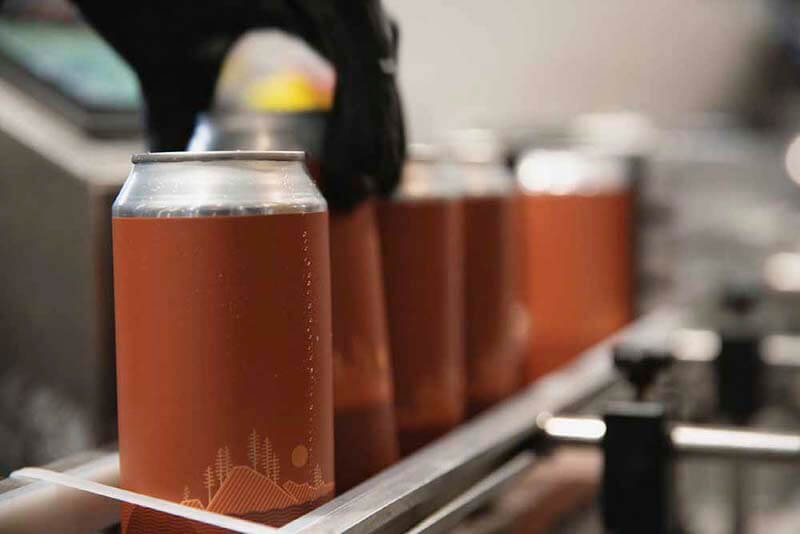
Photography courtesy of Fair Isle Brewing
Vriesenga breaks it down based on estimates of how quickly you can get a return on your investment.
“Common runs are one hundred cases per week,” he says. “One hundred cases a week breaks down to $2,400 per week and $125,000 per year.”
He adds, “The average we see is a growth to 500 cases a week or $12,000 per week. That’s $624,000 per year added to the bottom line.”
The bottom line from Vriesenga: “ROI is quick.”
Bell says that Living the Dream has a four-year loan agreement on their canning line, which amounts to how much they paid for mobile canning before purchasing their Alpha Brewing Operations line.
But it’s not so much the ROI as the freedom they have with their own equipment.
According to Bell, “We are canning a lot more than we were [with mobile canning] and have the flexibility to can when the beer is ready versus having the beer ready when [the mobile canning company] was coming to can.”



